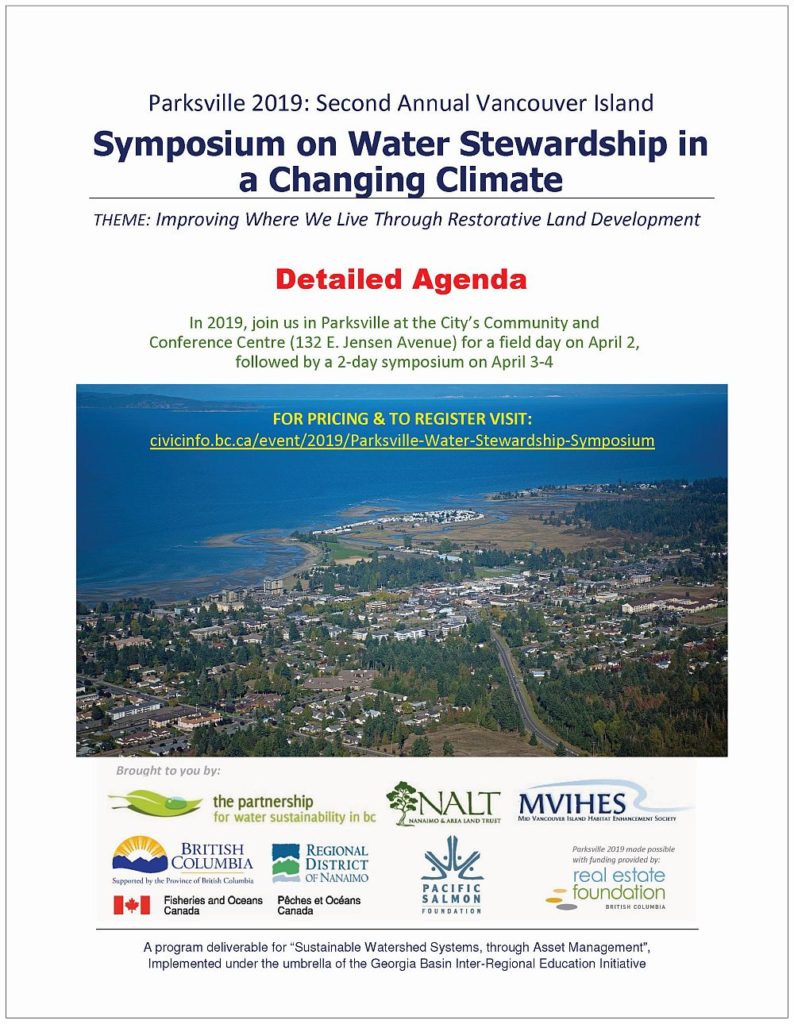SUSTAINABLE STREAM RESTORATION: Parksville 2019 Symposium organizing committee releases the Detailed Agenda for Day One (April 3) – “Getting It Right by Applying the Whole-System Approach”
Note to Reader:
Click on PARKSVILLE SYMPOSIUM AGENDA to download a package that elaborates on the presentation topics in each of the four modules that comprise the program on each symposium day. Parksville 2019 is a call to action. Read together, the set of abstracts create a seamless storyline that is designed to inform delegates so that they will know what to expect on April 3-4 when they convene in Parksville.

Reconnect Hydrology and Ecology – What Happens on the Land in the Creekshed Matters to Streams!
Development reduces the capacity of the landscape to absorb and hold water. When it rains, there is more flow volume and streams erode; in a drought, there is little or no flow as the surrounding land dries out.
In the 1990s, Dr. Chris May’s seminal research defined the relationship between land use change and stream impacts. To protect stream ecology, communities must address the root causes of ‘changes in hydrology’ (water quantity).
MODULE A: “Getting It Right” – The Whole System Approach
Module A comprises three presentations. The first, by Kim Stephens, provides the bridge from the Nanaimo 2018 Symposium. The second, by Paul Chapman, reports out on one of the substantial outcomes of Nanaimo 2018. The third presentation, by Dr. Chris May of Kitsap County in Washington State, is the feature presentation and is the tone-setter for the symposium.
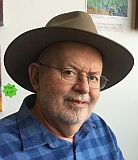 “The title of my presentation is Nanaimo 2018: A Watershed Moment for Collaboration Success Stories. In leading off, I will be looking back in order to look ahead. This means that I will re-cap the highlights from Nanaimo 2018 in order to frame expectations for Parksville 2019,” states Kim Stephens, Executive Director of the Partnership for Water Sustainability in British Columbia. “Three key messages from Nanaimo 2018 are: An informed and educated stewardship sector is a catalyst for action. Align efforts to re-establish creekshed function in the mid-Island region. Learn from those who are leading change. These takeaways also apply to Parksville 2019.”
“The title of my presentation is Nanaimo 2018: A Watershed Moment for Collaboration Success Stories. In leading off, I will be looking back in order to look ahead. This means that I will re-cap the highlights from Nanaimo 2018 in order to frame expectations for Parksville 2019,” states Kim Stephens, Executive Director of the Partnership for Water Sustainability in British Columbia. “Three key messages from Nanaimo 2018 are: An informed and educated stewardship sector is a catalyst for action. Align efforts to re-establish creekshed function in the mid-Island region. Learn from those who are leading change. These takeaways also apply to Parksville 2019.”
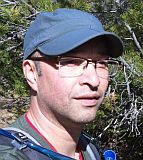 “I will follow Kim with a presentation titled Nanaimo Watershed Health Community of Practice: The Hard Work of Hope,” continues Paul Chapman, Executive Director of the Nanaimo & Area Land Trust (NALT). “Galvanized by what they learned during the day at Nanaimo 2018, a diverse group of stewardship groups took their first coordinated action before leaving the symposium. They formed a ‘creekshed coalition’, united by water, to put symposium words into actions. In reporting out on the past year, I will share their strategies, actions, successes and lessons to grow a community of stewardship.”
“I will follow Kim with a presentation titled Nanaimo Watershed Health Community of Practice: The Hard Work of Hope,” continues Paul Chapman, Executive Director of the Nanaimo & Area Land Trust (NALT). “Galvanized by what they learned during the day at Nanaimo 2018, a diverse group of stewardship groups took their first coordinated action before leaving the symposium. They formed a ‘creekshed coalition’, united by water, to put symposium words into actions. In reporting out on the past year, I will share their strategies, actions, successes and lessons to grow a community of stewardship.”
The Science Behind the Whole-System, Water Balance Approach
“We have set aside an hour for Chris May to provide the audience with an understanding as to why hydrology is the engine that powers ecological services,” states Kim Stephens.
 “In the 1990s, the ‘salmon crisis’ was the driver for pioneer research by Dr. Chris May and Dr. Richard Horner (University of Washington). Their work was seminal, transformative and far-reaching: it opened the door to the Whole-System, Water Balance approach to rainwater management; and it led to the ‘flow-duration curve’ being the cornerstone of regulatory change in Washington State and California. Their findings are integrated into Stormwater Planning: A Guidebook for British Columbia.
“In the 1990s, the ‘salmon crisis’ was the driver for pioneer research by Dr. Chris May and Dr. Richard Horner (University of Washington). Their work was seminal, transformative and far-reaching: it opened the door to the Whole-System, Water Balance approach to rainwater management; and it led to the ‘flow-duration curve’ being the cornerstone of regulatory change in Washington State and California. Their findings are integrated into Stormwater Planning: A Guidebook for British Columbia.
“For the past two decades, a leadership position in local government has allowed Chris May to put science into practice. To set the tone for the symposium, he will tell the story of how his research correlated the relationship between land use and stream health; and how Kitsap County is a living laboratory for implementing a hydrology-based approach at multiple scales (to build resilience).”

Englishman River Watershed
MODULE B: Panel & Town-Hall Session: Watershed Health and You
“The Englishman River ‘big picture’ story (endangered river, regional water source, Shelly Creek restoration) provides the backdrop for developing a shared understanding of what a Whole-System approach looks like, and what it would mean to reconnect hydrology and ecology,” states Peter Law, President of the Mid Vancouver Island Habitat Enhancement Society (MVIHES).
The town-hall is the heart of the symposium program. The spotlight is on citizen science, and in particular the catalyst role MVIHES plays. A 5-person team, including Peter Law, will prime the audience with 5-minute vignettes.
“The desired outcome is that the audience will understand why the Englishman River Watershed is an integrated system, and will be better informed to champion the Whole-System Approach in the creeksheds where they live,” foreshadows Peter Law.
To Learn More:
To read a stand-alone article about the themes that the panel will address, click on MODULE B – DAY ONE – PARKSVILLE 2019: A Panel & Town-Hall Session on “Watershed Health and You” features the Englishman River integrated system, to demonstrate that what happens on the land in a watershed (and in its tributary creeksheds) matters to streams

MODULE C: Make Better Decisions: First, Understand How Rain Reaches a Stream
In the afternoon, Kim Stephens will set the tone with a bridging presentation titled Hard Work of Hope in a Changing Climate: Will We Adapt? He will be followed by Neil Goeller and Sylvia Barroso of the Ministry of Forests, Lands, Natural Resource Operations and Rural Development. They will tag-team to deliver a “mini-workshop with the symposium” that is titled Closing the Data Gap: Water Stewards, the Key to the Future.
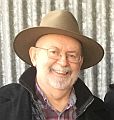 “Prominent scientists say 2018 marks a turning point in human history. We may have crossed an invisible threshold into a new climate regime. It is not the end of the world, just the beginning of another,” states Kim Stephens. “We have the knowledge and tools to restore balance to the water cycle. Can we, will we? Yes, of course we can – but only if civil engineers, urban planners and decision-makers change their mind-sets and grasp the inherent complexity and unpredictability of working with natural systems.”
“Prominent scientists say 2018 marks a turning point in human history. We may have crossed an invisible threshold into a new climate regime. It is not the end of the world, just the beginning of another,” states Kim Stephens. “We have the knowledge and tools to restore balance to the water cycle. Can we, will we? Yes, of course we can – but only if civil engineers, urban planners and decision-makers change their mind-sets and grasp the inherent complexity and unpredictability of working with natural systems.”
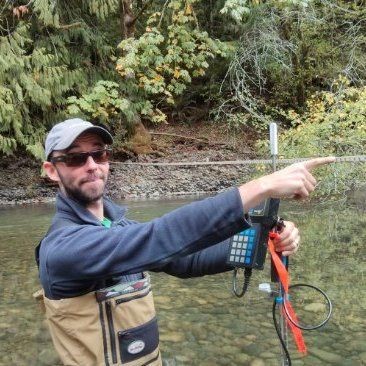 “Understanding the complex interactions of whole-system, water balance processes that lead to water availability in and on the ground, and all the values that depend on it, is critical to effective water resource allocation,” continues Neil Goeller, Regional Hydrologist for the West Coast Region. “The provincial government leads the way with collection, storage and dissemination of surface and groundwater data. A federal agreement provides for large scale data collection on major sources (rivers and lakes). However, there is a gap at the local level.
“Understanding the complex interactions of whole-system, water balance processes that lead to water availability in and on the ground, and all the values that depend on it, is critical to effective water resource allocation,” continues Neil Goeller, Regional Hydrologist for the West Coast Region. “The provincial government leads the way with collection, storage and dissemination of surface and groundwater data. A federal agreement provides for large scale data collection on major sources (rivers and lakes). However, there is a gap at the local level.
“Stewardship groups have local knowledge about local water resources; and are the most invested and most connected to the land base. Participation in streamflow data collection is a way to educate them about creekshed hydrology, in particular correct data collection techniques and their importance for refining the water balance and understanding what the numbers mean.
“This would create understanding that would enhance their effectiveness as champions for reconnecting hydrology and ecology. It would also fill a gap at the creekshed micro-scale where flow data are sparse to non-existent. A provincial government initiative on Vancouver Island is mobilizing stewardship groups and community volunteers to collect such data.”
“By the end of the mini-workshop, our hope is that streamkeepers will understand the value of their contribution in being part of a provincial initiative to fill a data collection gap at the local level,” states Kim Stephens.
MODULE D: Back to the Future: Reconnect Hydrology and Ecology
The closing for Day 1 is a ‘call to action’by Nick Leone, Senior Fisheries Restoration Biologist with DFO (Department of Fisheries & Oceans, a federal agency), and the bridge to Storm Cunningham’s evening lecture and the theme for Day 2: restorative land development results in sustainable stream restoration. His presentation is titled Lessons Learned: Focus on Root-Causes; Integrate Restorative Solutions, and is the book-end for the presentation by Dr. Chris May.
 “Decades of in-stream restoration work have not been sustainable because communities have not addressed the root causes of ‘changes of hydrology’,” observes Nick Leone. “Going forward we will need to: think and act more strategically; look for synergies between programs, systems, policies, disciplines and management objectives; account for uncertainty through acknowledging what we don’t know, and variability in what we do know; develop effective partnerships that get the vision right and produce sound strategies.”
“Decades of in-stream restoration work have not been sustainable because communities have not addressed the root causes of ‘changes of hydrology’,” observes Nick Leone. “Going forward we will need to: think and act more strategically; look for synergies between programs, systems, policies, disciplines and management objectives; account for uncertainty through acknowledging what we don’t know, and variability in what we do know; develop effective partnerships that get the vision right and produce sound strategies.”
To Learn More:
Download PARKSVILLE SYMPOSIUM AGENDA, or click on the image below.
In addition, click on the links listed below. In the build-up to Parksville 2019, the Partnership for Water Sustainability published a series of announcements that featured program elements:
- Backgrounder #1 – Professional Reliance Review & Restorative Development Vision Set the Stage
- Backgrounder #2 – Decrease Destructive Footprint While Increasing Restorative Footprint
- Backgrounder #3 – Local Government Partnerships with Stewardship Sector Can Be Transformational
- Backgrounder #4 – Root Causes of Degraded Urban and Rural Streams
- Backgrounder #5 – Next Decade of Drinking Water & Watershed Protection in the Nanaimo Region
- Backgrounder #6 – Restorative Land Development Results in Sustainable Stream Restoration
- Backgrounder #7 – Closing the Data Gap: Water Stewards, the Key to the Future
- Backgrounder #8 – Beacons of Hope on Vancouver Island
Designed to paint a picture of the field day and 2-day symposium, the series delves into the details of the cascading program to inform, educate and establish expectations for delegates and prospective delegates.


